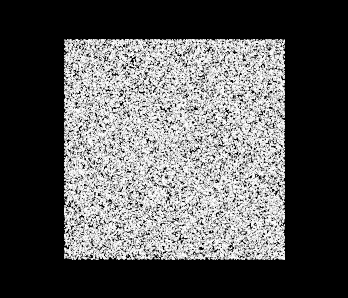Let's not give up on our square just yet. Perhaps the fault lies not with our number of vertices,
but in the fraction of distance we travel at each step.
Let r denote this fraction. For
example, in the case of the triangle, we put each dot halfway between the previous dot and the chosen vertex.
So that's using r = 1/2. Likewise, if we instead put each dot three quarters of the way from the previous dot to the
chosen vertex that would be using r = 3/4.
Use the panel below to explore some different r values for 4 vertices. In particular, try something larger
than 1/2. You can enter the r values either as fractions, like 3/4, or as decimals, like 0.75.
(And this time around, we'll plot the points rather faster than we did for the triangle, and we'll choose one
of the vertices as our starting point.)
You can also explore different r values for 5 vertices, 6 vertices, etc. Some combinations produce beautiful results!
